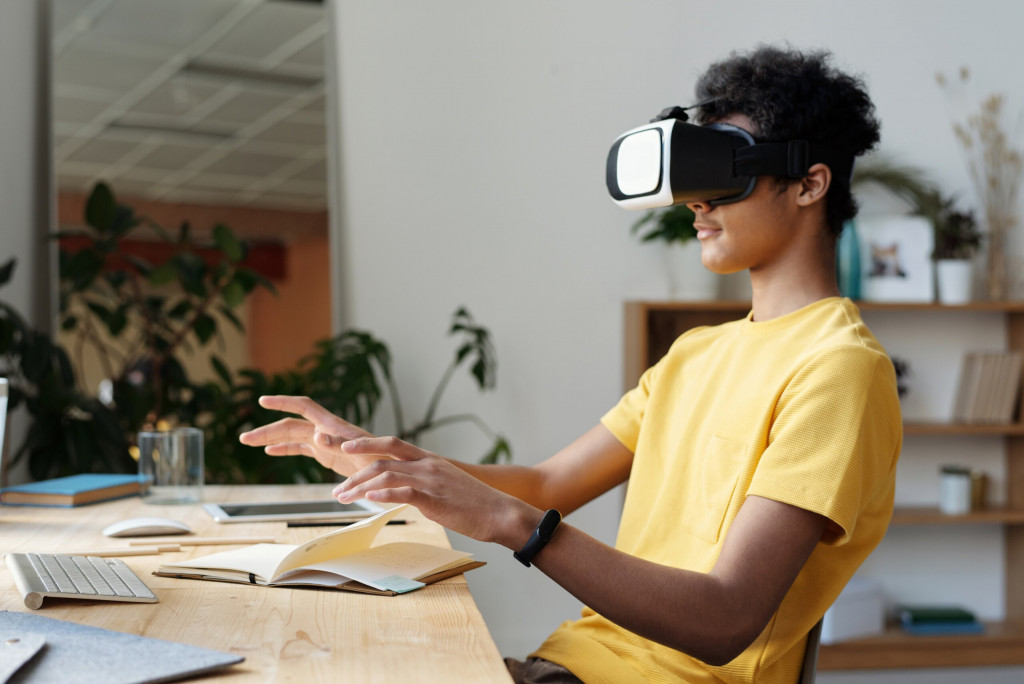Virtual reality has evolved beyond gaming and entertainment into something far more profound. Today’s advanced systems combine artificial intelligence with immersive storytelling to create deeply personalized experiences that serve both therapeutic and creative purposes.
The Revolution of Intelligent Virtual Storytelling
Traditional therapy often relies on conversation and imagination to help patients process emotions and experiences. VR narratives change this dynamic completely by placing individuals directly into carefully crafted virtual environments where they become active participants in their healing journey.
These AI-powered systems analyze user responses, biometric data, and personal preferences to generate unique storylines. Each narrative adapts in real-time, responding to how someone moves, speaks, or even breathes within the virtual space.
The technology recognizes emotional states through subtle cues like voice tone, posture, and interaction patterns. This creates an unprecedented level of personalization that traditional media simply cannot achieve.
Therapeutic Applications That Transform Lives
Mental health professionals are discovering remarkable results when combining AI-curated VR with established therapeutic practices. Patients with anxiety disorders can gradually expose themselves to triggering situations within safe, controlled virtual environments.
Depression treatment benefits from immersive narratives that guide individuals through scenarios designed to rebuild confidence and self-worth. The AI component ensures each session builds appropriately on previous experiences while maintaining therapeutic momentum.
Trauma recovery programs use these personalized narratives to help patients reframe difficult memories. The virtual environment provides a buffer between the individual and their trauma while still allowing for meaningful processing and healing.
PTSD treatment has shown particularly promising outcomes. Veterans and first responders engage with scenarios that mirror their experiences but allow them to explore different outcomes and coping strategies.
Creative Exploration Unleashed
Artists and writers are embracing AI-curated VR as a new medium for expression and inspiration. These systems generate collaborative narratives where human creativity merges with artificial intelligence to produce entirely new forms of storytelling.
Musicians find themselves composing within virtual landscapes that respond to their melodies with visual transformations. The AI learns their style preferences and suggests harmonic progressions or rhythmic variations that enhance their creative flow.
Visual artists work within three-dimensional canvases where their movements and choices influence not just the immediate artwork but the entire virtual environment around them. Colors, textures, and forms evolve based on the artist’s emotional state and creative intentions.
Writers collaborate with AI systems that understand narrative structure, character development, and thematic elements. The virtual environment becomes a living manuscript where stories unfold spatially rather than just temporally.
The Technology Behind Personalized Experiences
Machine learning algorithms process vast amounts of user data to understand individual preferences, fears, goals, and creative inclinations. Natural language processing enables these systems to communicate through dialogue, narration, and interactive storytelling elements.
Biometric sensors track heart rate, skin conductance, and eye movement to gauge emotional responses. This physiological feedback helps the AI adjust narrative pacing, intensity, and thematic content in real-time.
Advanced graphics engines create photorealistic environments that respond dynamically to user presence and actions. Physics simulations ensure that virtual objects behave naturally, maintaining the illusion of reality necessary for therapeutic effectiveness.
Voice synthesis technology creates characters that speak with appropriate emotional inflection and personality traits tailored to each user’s needs and preferences.
Measuring Success and Outcomes
Clinical studies demonstrate significant improvements in treatment outcomes when AI-curated VR narratives supplement traditional therapy methods. Patients report higher engagement levels and faster progress toward therapeutic goals.
Creative professionals using these tools show increased productivity and satisfaction with their artistic output. The collaborative nature of AI-enhanced creativity appears to reduce creative blocks and inspire new directions for artistic exploration.
Long-term studies indicate that personalized VR experiences create lasting behavioral changes and improved emotional regulation skills. Users develop better coping mechanisms and enhanced self-awareness through repeated exposure to thoughtfully crafted virtual scenarios.
Addressing Privacy and Ethical Considerations
The intimate nature of therapeutic VR experiences raises important questions about data privacy and security. Developers must implement robust encryption and access controls to protect sensitive psychological and biometric information.
Ethical guidelines ensure that AI systems cannot manipulate users in harmful ways or create dependencies on virtual experiences. Professional oversight remains essential in therapeutic applications to maintain appropriate boundaries and treatment goals.
Informed consent processes help users understand how their data will be used and what kinds of personalization they can expect from the system.
The Future of Personalized VR Narratives
Emerging technologies promise even more sophisticated personalization capabilities. Brain-computer interfaces may eventually allow direct neural feedback to influence narrative development in real-time.
Haptic feedback systems will add tactile dimensions to virtual experiences, making them more convincing and therapeutically effective. Users will feel textures, temperatures, and physical sensations that enhance emotional engagement.
Cross-platform integration will enable seamless transitions between VR sessions and real-world activities. Therapeutic insights gained in virtual environments will inform daily life decisions and behaviors.
As processing power increases and AI systems become more sophisticated, these personalized narratives will become indistinguishable from reality while maintaining their therapeutic and creative benefits.
Getting Started with VR Narrative Therapy
Healthcare providers interested in implementing these technologies should begin with pilot programs focused on specific patient populations. Training staff on both the technical aspects and therapeutic applications ensures successful adoption.
Creative professionals can explore consumer-grade VR systems that offer AI-enhanced storytelling tools. Many platforms now provide accessible entry points for artists, writers, and musicians interested in this emerging medium.
For comprehensive insights on implementing cutting-edge marketing technologies like VR narratives in healthcare and creative industries, visit ArMarketingTips for expert guidance and industry best practices.
The convergence of artificial intelligence and virtual reality creates unprecedented opportunities for healing, growth, and creative expression through deeply personalized narrative experiences.





